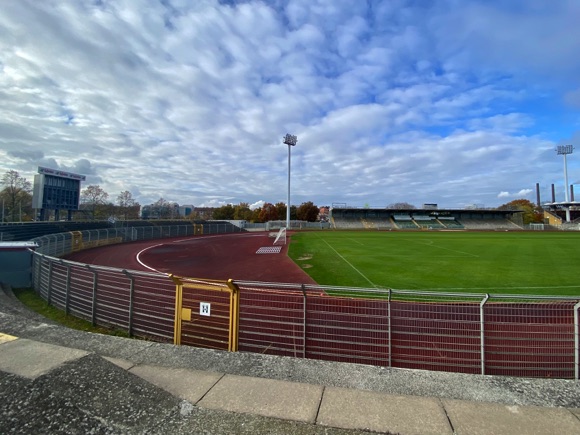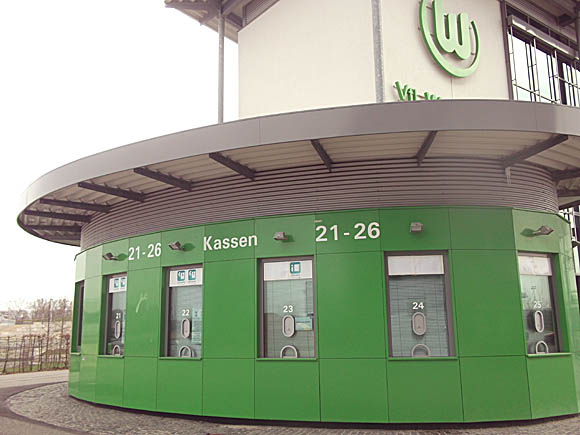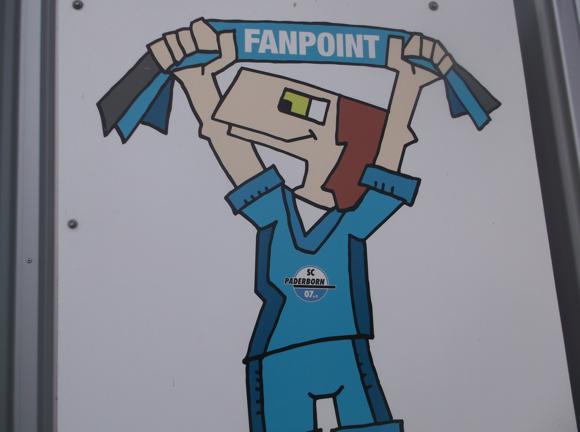A fan’s guide – the club from early doors to today
Few Bundesliga champions can claim such humble, post-war beginnings as VfL Wolfsburg. Emerging in 1945 as a factory works team whose members hadn’t all played organised football before, immediately overshadowed by an off-shoot team in a town of fewer than 25,000 people, VfL rose with the economic miracle to claim a place in Germany’s lower flight within two decades – and the Bundesliga within three.
Promoted in 1997, after a losing appearance in the German Cup Final two years earlier, these Zweite mainstays were not expected to stay up for more than one season. But goals from Roy Präger just kept them from the drop, then Polish international ‘Jusko’ Juskowiak bagged regularly to grant VfL to a European place.






Under Wolfgang Wolf (no, they really couldn’t make it up), Wolfsburg maintained a healthy presence in the Bundesliga with occasional European participation, as backers Volkswagen built a much-needed new arena.
The move, from the old-school VfL Stadion am Elsterweg, which had opened in 1947 and was last renovated half a century later, to the Volkswagen Arena. The reserve side stayed at the old ground until the AOK Stadion, home of Wolfsburg’s phenomenally successful women’s team, was opened next door to the new arena. The second team was later dissolved for VfL to concentrate on youth teams.
Back in 2007, Bundesliga status had looked shaky until disciplinarian coach Felix Magath arrived and soon turned a losing outfit into UEFA Cup participants, taking on Milan and Paris Saint-Germain.
Magath made stars out of the prolific Edin Džeko and his Bosnian compatriot, midfielder Zvjezdan Misimović, along with Brazilians Grafite and Josué, the four key elements in VfL’s march to the title a year later. Ten straight wins in spring, and 50-plus goals from Džeko and Grafite wrested the title from Bayern.











But Magath had already arranged a job at Schalke – VfL struggled at home and abroad. Coaches came and went, Steve McClaren, even Magath again. Wolfsburg sprang back to life in 2014-15 thanks to a third-choice striker from Deventer, Bas Dost. From the fringes of the first team, Dost started scoring hatfuls of goals after the winter break, including a brace in a notable 4-1 win over Bayern. Along with Belgian international Kevin De Bruyne, Dost kept VfL in second place, reaching the quarter-finals of the Europa League and winning the German Cup.
In its way, the 2014-15 campaign was more impressive than the shock title win of 2009, opening the door to the Champions League. The sale of De Bruyne to Manchester City – after his penalty helped Wolfsburg to a shoot-out victory over Bayern in the pre-season Supercup – filled the coffers. Julian Draxler came from Schalke, Max Kruse from Mönchengladbach, and coach Dieter Hecking looked to build on his recent success in 2015-16.









Stadium Guide
The field of dreams – and the story behind it






Set by the canal alongside the car plant, the Volkswagen Arena is a compact, 30,000-capacity, family-friendly stadium designed for the modern game. Intimate but large enough to stage less demanding internationals – a German friendly against Canada, earlier rounds of the 2011 Women’s World Cup – the Volkswagen Arena is just over the water from Wolfsburg’s train station, and from the original VfL ground it superseded.
While VfL painstakingly climbed the German league pyramid from their humble base on Elsterweg, a modest team of expat Italian car workers, Lupo Martini Wolfsburg, were playing at what was then the Sportplatz Berliner-Brücke.
This would prove the perfect site for Volkswagen to base their now top-level club, VfL. Given the green light in December 2000, the €53-million Volkswagen Arena was opened exactly two years later – with a home defeat to Stuttgart.






For Bundesliga games, 8,000 standing places are allocated for the lower tier of the home end, the Nordtribüne, odd-numbered sectors 1-11. Opposite, the Südtribune contains both the away sectors (standing 29-30, seated 34, 36, 38) closest to the Osttribüne, and the family-oriented and no-smoking Wölfi-Kurve. Press, VIP and business seats are in the main West Stand, the Haupttribüne.
The matchday Halle 09 and Club 45 restaurant are in the Osttribüne, sectors 18-20 and 26-28, the main Fanshop and ticket office on the corner of this Osttribüne and the home north one.
getting here
Going to the stadium – tips and timings



The stadium is no more than 15min walk from Wolfsburg Hauptbahnhof. Exit the forecourt left, then turn left over the canal footbridge with the VW plant ahead of you. You’ll see the stadium over to the right on the other bank. Keep to the footpath by the canal to the right-hand side of the road bridge – the pavement below the bridge is very narrow.
Match-day buses numbered 251-256 serve the surrounding areas, free of charge for ticket-holders.
getting in
Buying tickets – when, where, how and how much


The two outlets are the Fanshop im Fanhaus (Mon-Fri 9am-5pm, match days 3.5hrs before kick-off, 1hr after game) behind the Osttribüne at the stadium, and the VfL FanWelt (Mon-Sat 10am-5pm) at the back of the City-Galerie shopping centre, Porschestraße 45, right in the middle of town. Those registered on the club website can use the print-at-home service.
For all enquiries, contact service@vfl-wolfsburg.de.
Matches are divided into three price bands, top dollar for the visits of Bayern and Borussia Dortmund, then pretty much everyone else in the same lower category. Seating is arranged as Gerade (sideline), Kurve (corner) and Hintertor (either end).
For Bayern or Dortmund, a Gerade seat is €70, Kurve €55 and Hintertor €35, admission for under-15s discounted by around 50%. A standing place is €15 and, bizarrely, it’s an extra €2 to stand in the singing section, filled with loyal VfL fans anyway. For Category 3 games, ie against nearly everyone else, seats are €44, €28 and €19, the under-15 discount is around 40%, and standing (and singing!) prices the same.
what to buy
Shirts, kits, merchandise and gifts



Among the wealth of green-and-white merchandise at the Fanshop im Fanhaus (Mon-Fri 9am-5pm, match days 3.5hrs before kick-off, 1hr after game) behind the Osttribüne at the stadium, and the VfL FanWelt (Mon-Sat 10am-5pm) in the downtown City-Galerie shopping centre, you’ll find snow globes, beermats and bottle openers – all branded with the big W, of course.
Current first-team tops lean towards the lime side of green, with white V-necked collars. Away shirts are black with collars and markings in luminous green.
Stadium tours
Explore the ground inside and out


German-language stadium tours take place Tue-Fri at 2pm and Sat at 1pm. Each lasts 90mins, taking in the home dressing room, players’ tunnel, dugout and VIP areas. Buy your ticket (€8, discounts €7, 6-16s €5) 1hr in advance from the Fanshop im Fanhaus.
There are no regular tours on match days but a stadium visit can be arranged as part of a special package 4.5hrs before kick-off, €22-€33, with modest discounts for children.
Where to Drink
Pre-match beers for fans and casual visitors








Bars in town are a short walk from the stadium but none in the immediate vicinity. The nearest spot is a Greek restaurant, Santorini, by the water on In den Allerwiesen, whose terrace overlooks the Volkswagen Arena, its green lights beckoning on the near horizon. Traditional Hellenic and Mediterranean cuisine matches the location, but they’re happy to serve you a big glass of Bavarian Maisel’s Weisse of a match day.
The stadium has its own outlet, by sectors 26-28 behind the Osttribüne. Club 45, with its large black-and-white photos illustrating pre-Bundesliga VfL history, has recently been replaced by the upscale Jott Playce 97 (Mon-Fri 9am-3pm, Sun 9am-1pm), closed on match days, but handy if you’re here during the week for the stadium tour.
The beer sold at the stadium is Veltins Pils. There are are no cash payments, only with a credit card, smartphone or VfL-Karte, sold for €10 at kiosks.





































